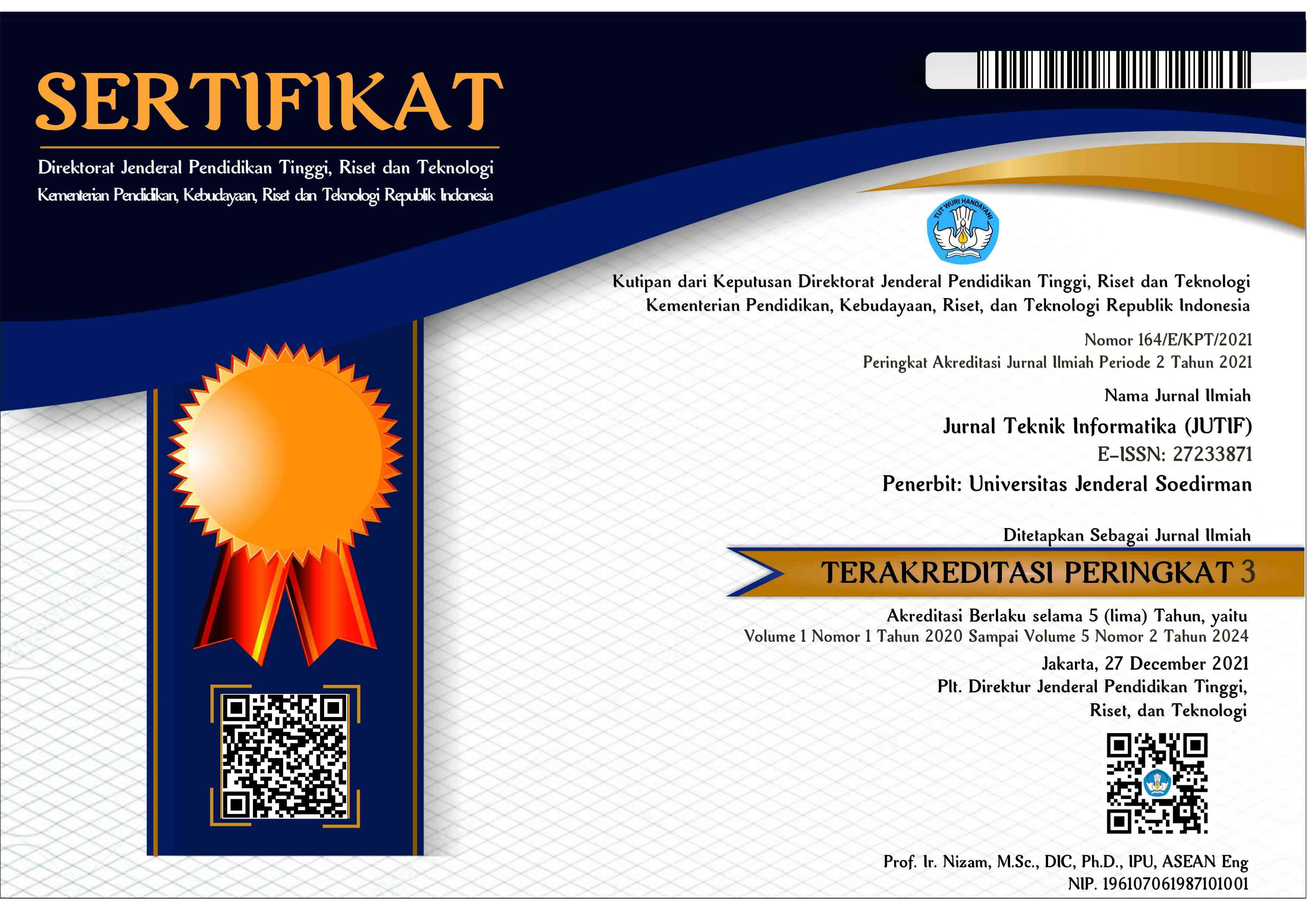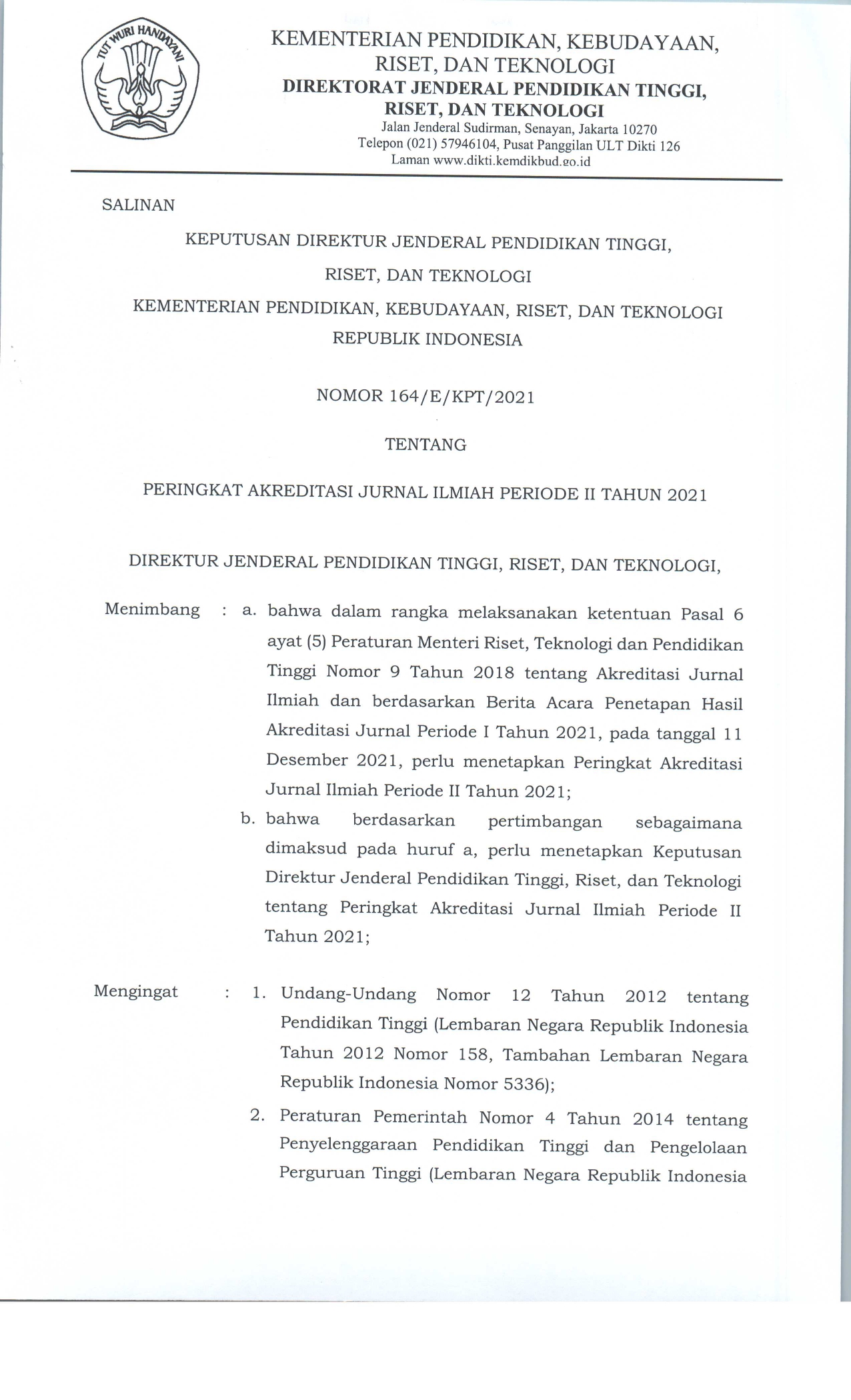THE RIGHT STEPS TOWARDS GRADUATION: NB-PSO SMART COMBINATION FOR STUDENT GRADUATION PREDICTION
Abstract
The current digital era demands a more innovative approach in predicting student campuses considering that campuses are not only important for students but also for lecturers, student guardians and higher education institutions. Previous studies have used various machine learning methods such as Decision Trees, Neural Networks, Support Vector Machines, etc. in these predictions. The problem that occurs is that even though various machine learning methods have been used, there are still limitations in the accuracy and efficiency of predicting student admissions, The problem in question can be given a real example of a case that occurred. So with this problem the aim is to develop a more effective methodology in predicting student permits, with recommendations from an intelligent combination of two computational techniques Naive Bayes (NB) and Particle Swarm Optimization (PSO). This research methodology includes data collection, NB model development and model partnership with PSO. Student graduation data is used in model testing with evaluation based on metrics such as accuracy and Area Under the Curve (AUC). The results showed a significant increase in accuracy to 86.94% from 83.30% and AUC value from 0.860 to 0.884 when using the combination of NB and PSO compared to NB without either. The integration of NB and PSO has been proven to increase effectiveness in classifying student graduation prediction cases. This research opens up opportunities for the practical application of technology in the education sector and emphasizes the importance of using effective optimization and feature selection techniques in improving prediction results.
Downloads
References
V. Riyanto, A. Hamid, and Ridwansyah, “Prediction of Student Graduation Time Using the Best Algorithm,” Indones. J. Artif. Intell. Data Min., vol. 2, no. 2, pp. 1–9, 2019, doi: http://dx.doi.org/10.24014/ijaidm.v2i1.6424.
Suhardjono, G. Wijaya, and A. Hamid, “PREDIKSI WAKTU KELULUSAN MAHASISWA MENGGUNAKAN SVM BERBASIS PSO,” Bianglala Inform., vol. 7, no. 2, pp. 97–101, 2019, doi: https://doi.org/10.31294/bi.v7i2.6654.g3731.
R. Ridwansyah, G. Wijaya, and J. J. Purnama, “Hybrid Optimization Method Based on Genetic Algorithm for Graduates Students,” J. Pilar Nusa Mandiri, vol. 16, no. 1, pp. 53–58, 2020, doi: 10.33480/pilar.v16i1.1180.
Hendra, M. A. Azis, and Suhardjono, “ANALISIS PREDIKSI KELULUSAN MAHASISWA MENGGUNAKAN DECISSION TREE BERBASIS PARTICLE SWARM OPTIMIZATION,” J. Sisfokom (Sistem Inf. dan Komputer), vol. 9, no. 1, pp. 102–107, 2020, doi: https://doi.org/10.32736/sisfokom.v9i1.756.
H. Nurdin, Sartini, Sumarna, Y. I. Maulana, and V. Riyanto, “Prediction of Student Graduation with the Neural Network Method Based on Particle Swarm Optimization,” Sink. J. dan Penelit. Tek. Inform., vol. 8, no. 4, pp. 2353–2362, 2023, doi: 10.33395/sinkron.v8i4.12973.
W. E. Pangesti, I. Ariyati, Priyono, Sugiono, and R. Suryadithia, “Utilizing Genetic Algorithms To Enhance Student Graduation Prediction With Neural Networks,” Sink. J. dan Penelit. Tek. Inform., vol. 9, no. 1, pp. 276–284, 2024, doi: https://doi.org/10.33395/sinkron.v9i1.13161 e-ISSN.
S. Widaningsih, “Perbandingan Metode Data Mining Untuk Prediksi Nilai Dan Waktu Kelulusan Mahasiswa Prodi Teknik Informatika Dengan Algoritma C4,5, Naïve Bayes, Knn Dan Svm,” J. Tekno Insentif, vol. 13, no. 1, pp. 16–25, 2019, doi: 10.36787/jti.v13i1.78.
Hartatik, “Optimasi Model Prediksi Kelulusan Mahasiswa Menggunakan Algoritma Naive Bayes,” Indones. J. Appl. Informatics, vol. 5, no. 1, pp. 32–38, 2020.
S. Salmu and A. Solichin, “Prediksi Tingkat Kelulusan Mahasiswa Tepat Waktu Menggunakan Naïve Bayes : Studi Kasus UIN Syarif Hidayatullah Jakarta,” Semin. Nas. Multidisiplin Ilmu 2017, no. April, pp. 701–709, 2017.
J. H. Jaman, “Prediksi Kelulusan Mahasiswa Dengan Metode Algoritma C4.5,” Syntax, vol. 2, no. 2, pp. 1–6, 2013, doi: 10.1002/jhet.1722.
M Hafidz Ariansyah, Esmi Nur Fitri, and Sri Winarno, “Improving Performance of Students’ Grade Classification Model Uses Naïve Bayes Gaussian Tuning Model and Feature Selection,” J. Tek. Inform., vol. 4, no. 3, pp. 493–501, 2023, doi: 10.52436/1.jutif.2023.4.3.737.
N. Widiastuti, A. Hermawan, and D. Avianto, “KOMPARASI ALGORITMA KLASIFIKASI DATAMINING UNTUK PREDIKSI MINAT PENCARI KERJA,” TEKNOINFO, vol. 17, no. 1, 2023.
Ridwansyah, I. Ariyati, and S. Faizah, “PARTICLE SWARM OPTIMIZATION BERBASIS CO-EVOLUSIONER DALAM EVALUASI KINERJA ASISTEN DOSEN,” J. SAINTEKOM, vol. 9, no. 2, pp. 165–177, 2019, doi: https://doi.org/10.33020/saintekom.v9i2.96.
I. Ariyati, S. Rosyida, K. Ramanda, V. Riyanto, S. Faizah, and Ridwansyah, “Optimization of the Decision Tree Algorithm Used Particle Swarm Optimization in the Selection of Digital Payments,” in Journal of Physics: Conference Series, 2020, vol. 1641, no. 1, doi: 10.1088/1742-6596/1641/1/012090.
M. Iqbal et al., “Implementation of Particle Swarm Optimization Based Machine Learning Algorithm for Student Performance Prediction,” JITK (Jurnal Ilmu Pengetah. Dan Teknol. Komputer), vol. 6, no. 2, pp. 195–204, 2020, doi: 10.33480/jitk.v6i2.1695.IMPLEMENTATION.
J. J. Purnama, H. M. Nawawi, S. Rosyida, Ridwansyah, and Risandar, “Klasifikasi Mahasiswa Her Berbasis Algortima Svm Dan Decision Tree,” J. Teknol. Inf. dan Ilmu Komput., vol. 7, no. 6, pp. 1253–1260, 2019, doi: 10.25126/jtiik.202073080.
R. Ridwansyah, V. Riyanto, A. Hamid, S. Rahayu, and J. J. Purnama, “Grouping Data in Predicting Infant Mortality Using K-Means and Decision Tree,” Paradigma, vol. 24, no. 2, pp. 168–174, 2022, doi: 10.31294/paradigma.v24i2.1399.
Ridwansyah and E. Purwaningsih, “Mengukur Tingkat Error Ketahanan Beton dengan Metode Klasifikasi Neural Network dan Support Vector Machine,” J. Tek. Inform., vol. 5, no. 1, 2019, doi: https://doi.org/10.51998/jti.v5i1.295.
A. S. Yudistira and A. Nugroho, “Prediction of the English Premier League Champion Team for the 2021/2022 Season Using the Naïve Bayes Method,” J. Tek. Inform., vol. 3, no. 5, pp. 1239–1243, 2022, doi: 10.20884/1.jutif.2022.3.5.328.
Copyright (c) 2024 Ahmad Hafidzul Kahfi, Titin Prihatin, Yudhistira Yudhistira, Adjat Sudradjat, Ganda Wijaya

This work is licensed under a Creative Commons Attribution 4.0 International License.





























